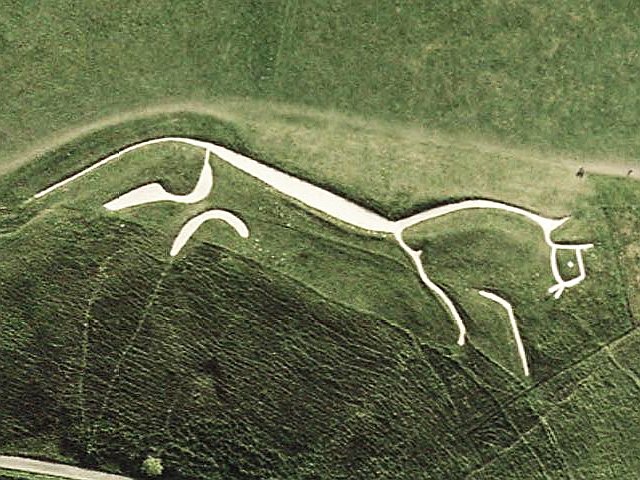Geoglyphs are ancient, large, visual representations on Earth’s landscape that have been created by altering the soil surface layer in order to allow the resulting depiction to be seen from afar or from above. Ranging from depictions of enormous humans and horses to hummingbirds, spiders, and abstract geometric designs, these enigmatic creations were made by carving away layers of darker strata to reveal lighter strata or by building up or upturning stones to create a raised outline. Their functions and dates of origin are unknown, but their presence throughout the world is indicative of their importance to our early ancestors who created them, and they remain an ethno-geographic puzzle to this day.
Discounting predictable bizarro-world assertions about alien influences, virtually nothing is known about the reasons for the creation of geoglyphs. However, their sheer size, their global distribution, and the immense effort needed to form them are indicative of their importance to their creators. The most famous geoglyphs include the Nasca Lines of Peru and the British hill figures of horses and giants, but other major examples are to be found in Chili, Australia, Scandinavia, the former USSR, and the USA; recently, some were discovered in the Amazon Rainforest, in Brazil, leading to claims about unknown civilizations that may have inhabited the area in the past (source).
As for local geoglyphic enigmas, the Blythe Geoglyphs are “a group of gigantic figures found on the ground near Blythe, California in the Colorado Desert. The intaglios are found east of the Big Maria Mountains, about 15 miles (24 km) north of downtown Blythe just west of U.S. Highway 95 near the Colorado River. The largest human figure is 171 feet (52 m) long. The intaglios are best viewed from the air. The geoglyphs or intaglios (anthropomorphic geoglyphs) were created by scraping away layers of darker rocks or pebbles to reveal a strata of lighter valued soil. While these ‘gravel pictographs’ are found throughout the deserts of southeastern California, human figures are found only near the Colorado River. The figures are so immense that they were not observed by non-Indians until the 1930s. The set of geoglyphs includes several dozen figures and a labyrinth, thought to be ceremonial in nature. They are believed to date from 1000 CE but could range from 450 to 10,000 years old, and were most likely created by Mojave and Quechan Indians” (source).
Not all geoglyphs are ancient. Andrew Rogers, an Australian artist, is the creator of the world’s largest contemporary land art undertaking. Titled “Rhythms of Life,” the project began in 1998 and currently consists of a series of 46 enormous geoglyphs created in 13 countries on seven continents that has involved over 6,700 people to date (source).



.jpg)
